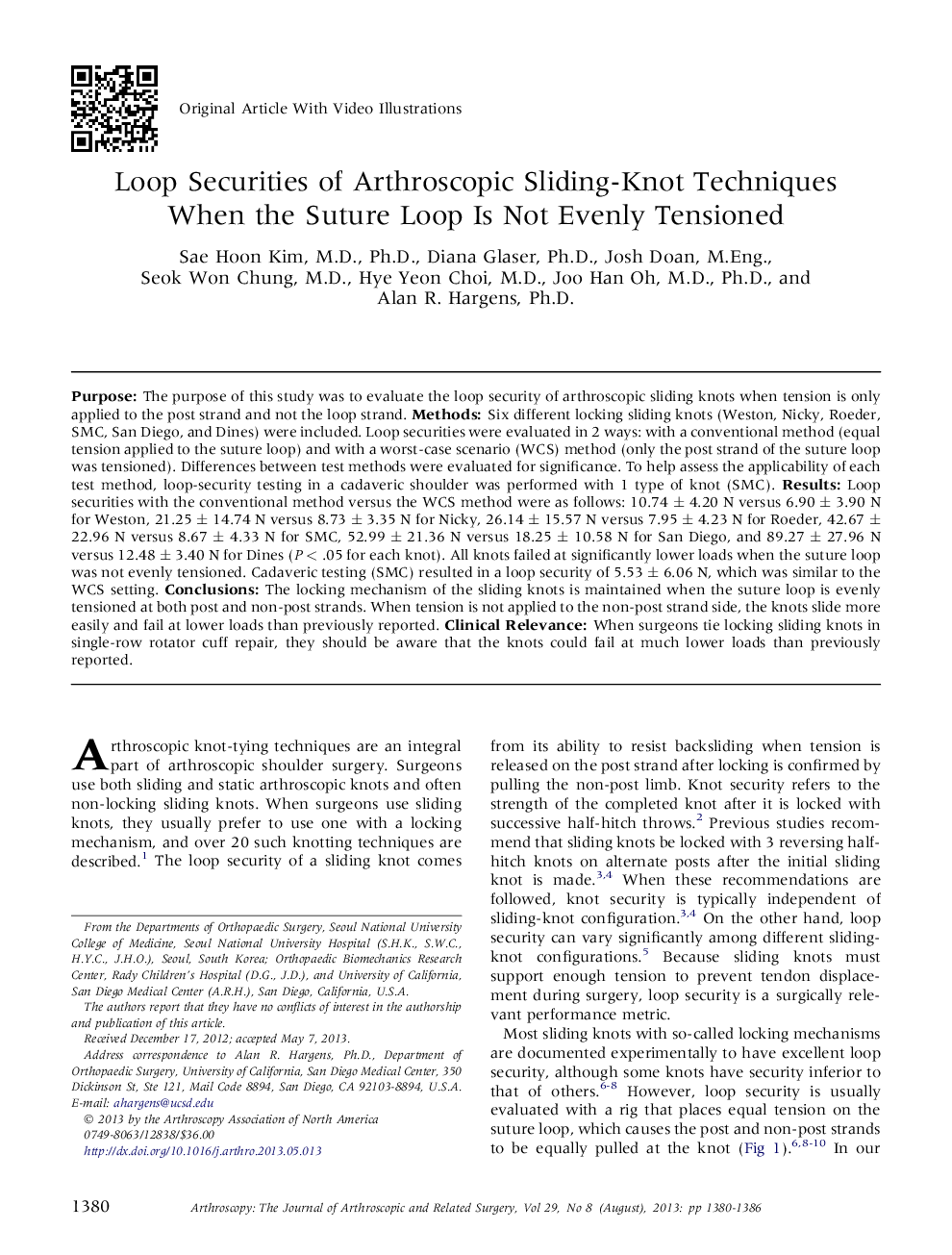| کد مقاله | کد نشریه | سال انتشار | مقاله انگلیسی | نسخه تمام متن |
|---|---|---|---|---|
| 4043891 | 1603508 | 2013 | 7 صفحه PDF | دانلود رایگان |

PurposeThe purpose of this study was to evaluate the loop security of arthroscopic sliding knots when tension is only applied to the post strand and not the loop strand.MethodsSix different locking sliding knots (Weston, Nicky, Roeder, SMC, San Diego, and Dines) were included. Loop securities were evaluated in 2 ways: with a conventional method (equal tension applied to the suture loop) and with a worst-case scenario (WCS) method (only the post strand of the suture loop was tensioned). Differences between test methods were evaluated for significance. To help assess the applicability of each test method, loop-security testing in a cadaveric shoulder was performed with 1 type of knot (SMC).ResultsLoop securities with the conventional method versus the WCS method were as follows: 10.74 ± 4.20 N versus 6.90 ± 3.90 N for Weston, 21.25 ± 14.74 N versus 8.73 ± 3.35 N for Nicky, 26.14 ± 15.57 N versus 7.95 ± 4.23 N for Roeder, 42.67 ± 22.96 N versus 8.67 ± 4.33 N for SMC, 52.99 ± 21.36 N versus 18.25 ± 10.58 N for San Diego, and 89.27 ± 27.96 N versus 12.48 ± 3.40 N for Dines (P < .05 for each knot). All knots failed at significantly lower loads when the suture loop was not evenly tensioned. Cadaveric testing (SMC) resulted in a loop security of 5.53 ± 6.06 N, which was similar to the WCS setting.ConclusionsThe locking mechanism of the sliding knots is maintained when the suture loop is evenly tensioned at both post and non-post strands. When tension is not applied to the non-post strand side, the knots slide more easily and fail at lower loads than previously reported.Clinical RelevanceWhen surgeons tie locking sliding knots in single-row rotator cuff repair, they should be aware that the knots could fail at much lower loads than previously reported.
Journal: Arthroscopy: The Journal of Arthroscopic & Related Surgery - Volume 29, Issue 8, August 2013, Pages 1380–1386